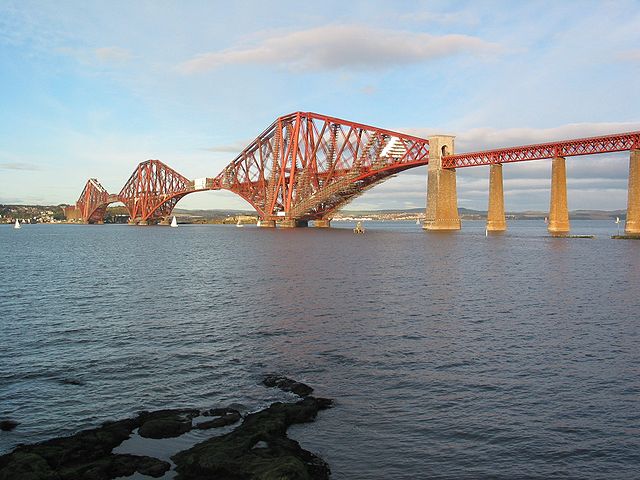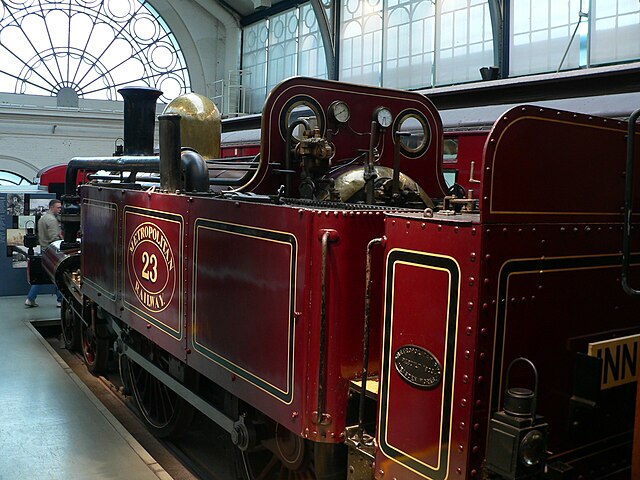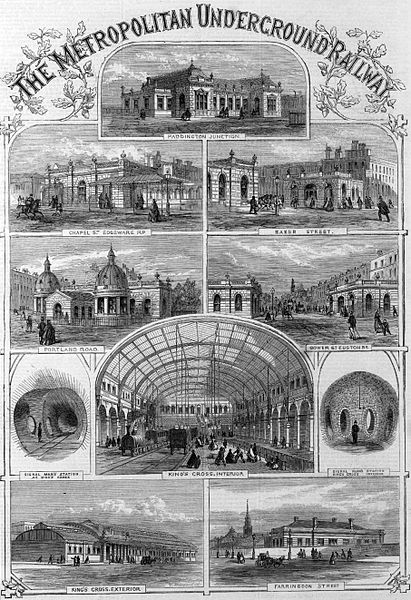Sir John Fowler, 1st Baronet
Sir John Fowler, 1st Baronet, KCMG, LLD, FRSE was an English civil engineer specialising in the construction of railways and railway infrastructure. In the 1850s and 1860s, he was engineer for the world's first underground railway, London's Metropolitan Railway, built by the "cut-and-cover" method under city streets. In the 1880s, he was chief engineer for the Forth Bridge, which opened in 1890. Fowler's was a long and eminent career, spanning most of the 19th century's railway expansion, and he was engineer, adviser or consultant to many British and foreign railway companies and governments. He was the youngest president of the Institution of Civil Engineers, between 1865 and 1867, and his major works represent a lasting legacy of Victorian engineering.
Sir John Fowler, 1st Baronet
Construction of the Metropolitan Railway close to King's Cross station in 1861
Forth Bridge
Fowler's A class locomotive
The Metropolitan Railway was a passenger and goods railway that served London from 1863 to 1933, its main line heading north-west from the capital's financial heart in the City to what were to become the Middlesex suburbs. Its first line connected the main-line railway termini at Paddington, Euston, and King's Cross to the City. The first section was built beneath the New Road using cut-and-cover between Paddington and King's Cross and in tunnel and cuttings beside Farringdon Road from King's Cross to near Smithfield, near the City. It opened to the public on 10 January 1863 with gas-lit wooden carriages hauled by steam locomotives, the world's first passenger-carrying designated underground railway.
Montage of the Metropolitan Railway's stations from The Illustrated London News December 1862, the month before the railway opened
Construction of the Metropolitan Railway close to King's Cross station in 1861
The cutting at Farringdon following the flooding from the Fleet sewer in June 1862
Metropolitan Railway A-Class 4-4-0T No 23 in Covent Garden







